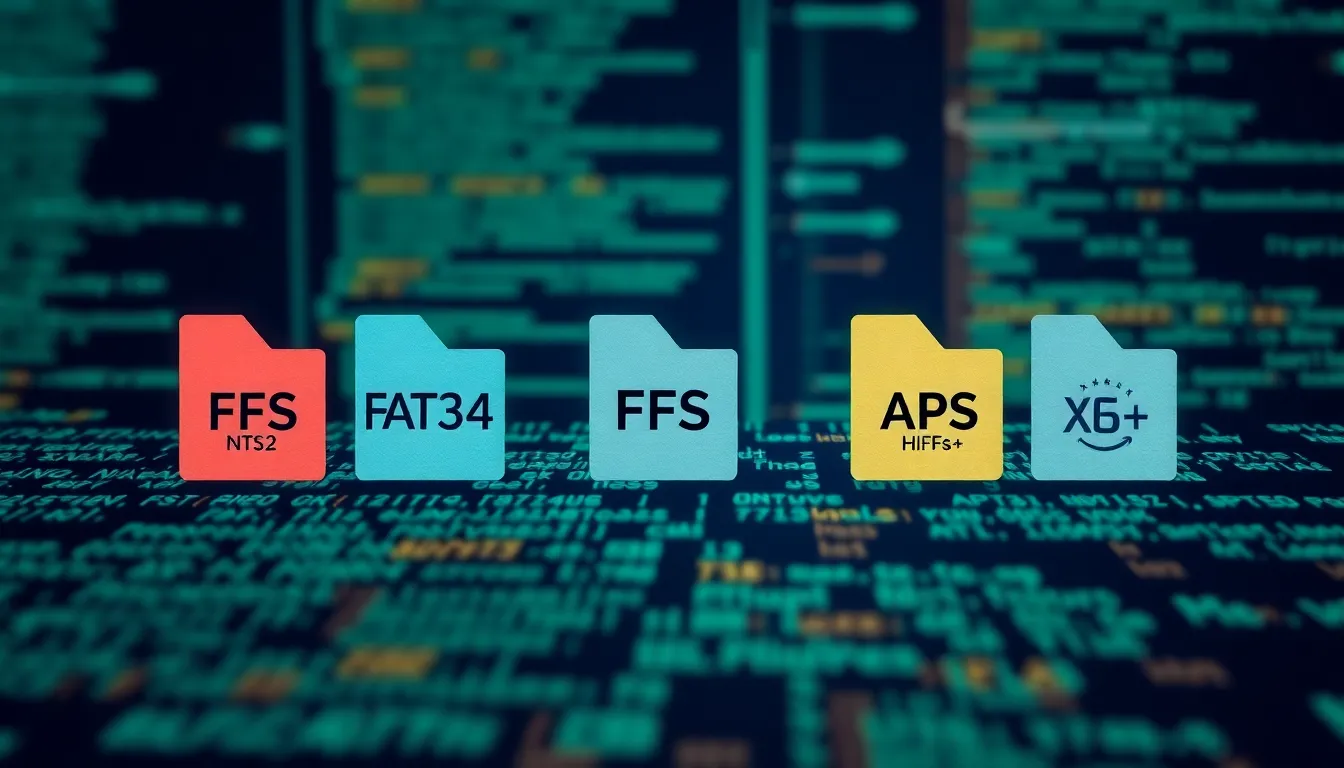In the digital age, a file system is like the unsung hero of your computer. It quietly organizes your data, making sure your vacation photos don’t end up in the same folder as your tax returns. Imagine a world where every time you searched for a document, you had to wade through a chaotic mess of files. Not fun, right?
Table of Contents
ToggleOverview of File Systems
File systems serve as the backbone of data organization, fundamentally structuring how files and directories are stored on various devices. They offer a systematic way to manage data, enabling users to efficiently retrieve and manipulate information.
Different types of file systems exist, including NTFS, FAT32, and exFAT, each catering to various needs and operating systems. NTFS, commonly used in Windows environments, supports advanced features like file permissions and encryption. FAT32, while older, remains popular for its compatibility with multiple operating systems. exFAT is specifically designed for flash drives and larger files, enhancing transfer efficiency.
File systems maintain metadata, which provides essential information about files, such as their size, type, and last modified date. This metadata enhances file management, allowing users to quickly locate what they need. Without this capability, users would struggle to navigate large data sets, creating significant inefficiencies.
Performance also plays a critical role in file systems. The choice of file system can affect read and write speeds, impacting overall system performance. Users should consider their specific requirements, such as file size and frequency of access, when selecting a file system.
Security features vary across file systems. For instance, NTFS offers extensive access control lists, enhancing user security. In contrast, simpler file systems may lack these advanced protections, making them less suitable for sensitive data.
Understanding file system architecture helps ensure optimal data management. By comprehending the strengths and weaknesses of each file system, users can choose the best option for their needs, ultimately leading to a more organized workspace and improved data accessibility.
Types of File Systems

Different types of file systems serve various needs across operating systems. Understanding these systems helps in choosing the best option for effective data management.
Windows File Systems
Windows primarily utilizes NTFS and FAT32 file systems. NTFS supports advanced features like file permissions, encryption, and large file sizes, making it ideal for modern Windows environments. It handles metadata efficiently, aiding in quick file access and management. FAT32, in contrast, is compatible across multiple platforms and is often found on USB drives and external storage. Limitations exist, such as a maximum file size of 4 GB and an overall volume limit of 8 TB.
Linux File Systems
Linux systems predominantly feature ext4, XFS, and Btrfs file systems. Ext4 provides robustness, supporting large volumes and files while ensuring data integrity through journaling. XFS excels in handling large files and scalability, suitable for heavy workloads. Btrfs stands out with advanced features such as snapshots and dynamic volume management. Each option caters to specific use cases, enhancing performance and data safety.
Mac File Systems
Mac primarily operates on APFS and HFS+. APFS, designed for SSDs, optimizes speed and efficiency while supporting features like encryption and snapshots. HFS+ remains compatible with older systems, supporting journaling and other mechanisms to improve reliability. Selecting the right file system on Mac ensures better performance and data retrieval, fostering streamlined workflows.
Key Components of a File System
File systems comprise various critical components that work together to manage data effectively. Understanding these components enhances one’s ability to make informed decisions regarding file management.
File Organization
File organization refers to how files are stored and structured on a storage device. Hierarchical structures, such as directories and subdirectories, help users categorize files efficiently. This organization method allows quick retrieval based on logical groupings, like project folders or document types. Flat file systems maintain all files at a single level, which can simplify access but often leads to disorganization. Files stored within organized structures enable users to locate items without excessive searching, promoting a streamlined workflow.
Metadata Management
Metadata management plays a vital role in file systems by providing information beyond the content of files. This extra data, such as file size, creation date, and access permissions, assists users in identifying files quickly. Enhanced metadata improves searchability, allowing users to filter results based on attributes. Efficient metadata systems contribute to overall file organization, reducing time spent on file retrieval. When metadata is well-maintained, users experience a significant boost in productivity, accessing critical data with minimal effort.
Access Methods
Access methods dictate how users interact with files and directories within a file system. Various methods include sequential, random, and indexed access, each suiting different needs. Sequential access requires reading files in a specific order, beneficial for large datasets. Random access enables users to retrieve data quickly without following a predetermined path, increasing efficiency. Indexed access provides a structured approach by creating an index for faster location of files, blending speed with organization. Understanding these access methods allows users to optimize their data interaction per their specific requirements.
Performance Considerations
Performance is a critical aspect of file systems, influencing overall data management efficiency. Factors like read and write speeds and fragmentation issues significantly affect how quickly data is accessed and stored.
Read and Write Speeds
Read and write speeds determine how fast data transfers occur within a file system. Faster read speeds mean quicker access to files, enhancing user experience through prompt retrieval. Write speeds impact how quickly data is saved, with slow write operations potentially causing delays during file saving or updates. Testing tools such as CrystalDiskMark effectively measure these speeds, revealing the performance nuances of various file systems. For instance, NTFS generally exhibits superior performance for large file transfers in Windows environments compared to FAT32. Users often prioritize speed when selecting a file system, understanding that it can streamline workflows and improve productivity.
Fragmentation Issues
Fragmentation occurs when files break into pieces scattered throughout the storage device. This phenomenon can slow down read times as the file system navigates these disjointed segments. Frequent fragmentation typically affects traditional hard drives more severely than solid-state drives, due to their mechanical nature. Regular maintenance, like defragmentation, can resolve these issues for file systems like NTFS. In the case of ext4, it employs a design that actively minimizes fragmentation. Understanding fragmentation allows users to maintain optimal performance, ensuring quick access to files without unnecessary delays.
File systems are the backbone of digital organization and data accessibility. Their role in maintaining order cannot be overstated as they prevent chaos in an increasingly data-driven world. By understanding the various types of file systems and their unique features users can make informed choices that enhance performance and security.
The significance of metadata and efficient access methods further amplifies the importance of a well-structured file system. Regular maintenance and awareness of performance factors ensure that users can enjoy quick access to their files. Ultimately a solid grasp of file systems leads to a more streamlined and productive digital experience.



